Sixty paintings from the Boston-based Museum of Bad Art (MOBA) are currently on display at the Huashan 1914 Creative Park. Created not by acclaimed artists but ordinary people, these works boast oddities, absurdities or simply ugliness — qualities that are equally as eye-catching as exquisite fine art.
The museum numbers more than 600 pieces in its permanent collection, many of them purchased from thrift shops, yard sales and secondhand stores. Part of the collection was donated by its creators, while some were retrieved from rubbish bins.
To be accepted by MOBA, the work must be original, have had no prior appearance in a museum or gallery, and possess a certain attention-grabbing quality.
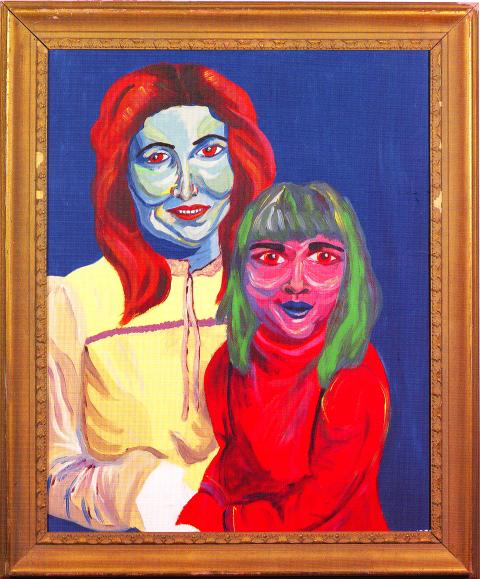
Photos Courtesy of Kuan Hung Arts
For example, Mama and Babe — a half-length portrait of two females with rigid facial contours — screams contrasting colors of red and green. Its title suggests that the figures are mother and daughter, and the explanatory panel indicates that the mother is a parody of a former US first lady.
Poor execution of artistic expression doesn’t guarantee a ticket to MOBA’s collection. Pablo Presley was selected for showcasing a version of Elvis Presley that’s different from the typical Elvis-in-black-velvet portraits found in many souvenir shops, says the exhibition catalog. The creator of this painting, Bonnie Daly, had taken another approach, interpreting the King of Rock ‘n’ Roll in the style of Pablo Picasso.
Some paintings look like nothing special until closer examination. Red Rose Serenade features a piano keyboard with incorrectly arranged keys — an oddity that begs an observant eye to detect it.
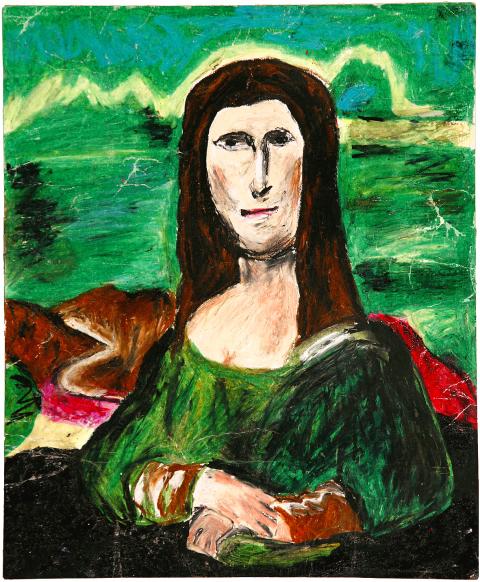
Photos Courtesy of Kuan Hung Arts
The exhibition includes several imitations of masterpieces. Badminton Anyone? vaguely resembles 18th-century French painter Jean-Baptiste-Simeon Chardin’s Girl with Shuttlecock in terms of composition. But Badminton Anyone? features a boyish-looking woman and a modern-day racquet that stray from the original big-time, and its far-from-competent technique evokes a smile.
Even though MOBA seems to imply there’s a such thing as “bad art,” its underlying message calls for an open-minded spirit in art appreciation. By showing ordinary paintings that were never meant to enter fine art museums or to be displayed in public, MOBA questions what qualifies as art. Amateur artists may lack the sophisticated drawing skill of professionals, but the value of their works isn’t necessarily lesser.
That being said, many of the explanatory panels in this exhibition illuminate not only how MOBA acquired the work but also provide art commentary, which either leads or limits the viewer’s mind. Instead of including commentary on the panels, curators should have set up a separate section for such information to avoid explaining too much on the spot.
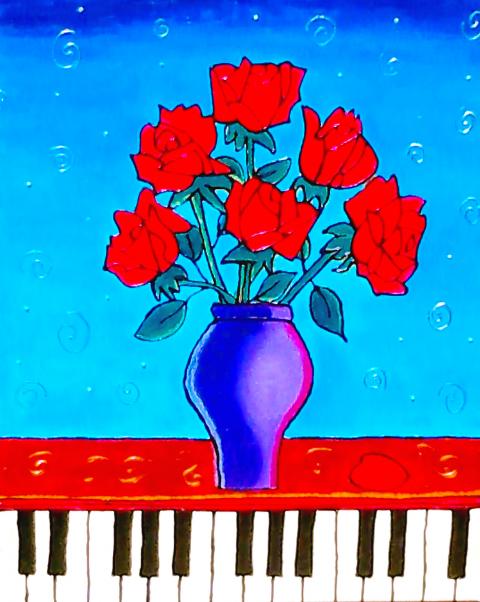
Photos Courtesy of Kuan Hung Arts
Another problem is that the 60 paintings are categorized into 11 sections based on confusing, often capricious criteria. For instance, paintings in the Poker Area don’t really have anything to do with the card game, but are simply presented on large poker cards. Other sections such as the Furnace Area, Bed Area and Spider Net Area are home to paintings that would otherwise have been burnt, hidden under the bed or covered by a spider net, but the value of grouping paintings in this way was lost for this reviewer. Without this extra layer of meaning imposed on the paintings, MOBA’s message might have been more accessible.

Photos Courtesy of Kuan Hung Arts
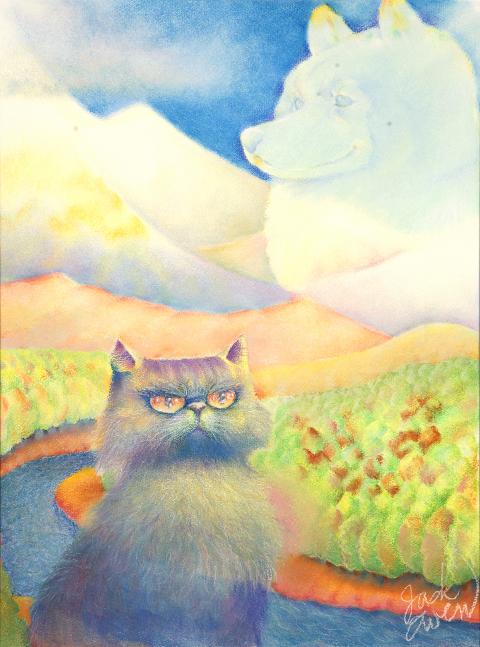
Photos Courtesy of Kuan Hung Arts
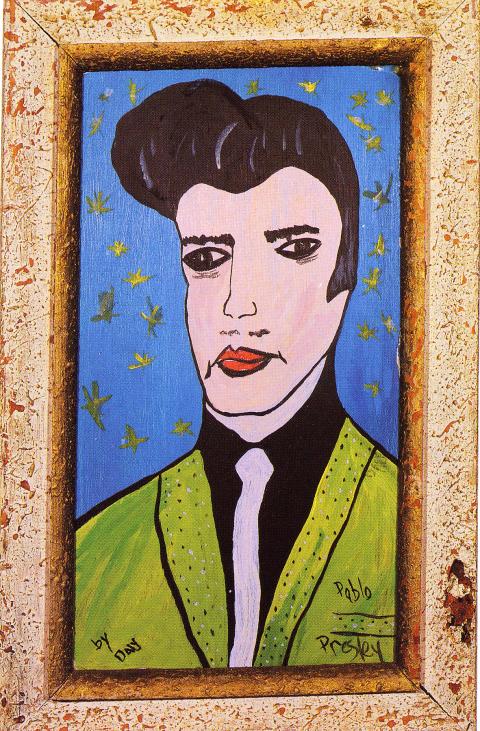
Photos Courtesy of Kuan Hung Arts

This month the government ordered a one-year block of Xiaohongshu (小紅書) or Rednote, a Chinese social media platform with more than 3 million users in Taiwan. The government pointed to widespread fraud activity on the platform, along with cybersecurity failures. Officials said that they had reached out to the company and asked it to change. However, they received no response. The pro-China parties, the Chinese Nationalist Party (KMT) and Taiwan People’s Party (TPP), immediately swung into action, denouncing the ban as an attack on free speech. This “free speech” claim was then echoed by the People’s Republic of China (PRC),

Exceptions to the rule are sometimes revealing. For a brief few years, there was an emerging ideological split between the Democratic Progressive Party (DPP) and Chinese Nationalist Party (KMT) that appeared to be pushing the DPP in a direction that would be considered more liberal, and the KMT more conservative. In the previous column, “The KMT-DPP’s bureaucrat-led developmental state” (Dec. 11, page 12), we examined how Taiwan’s democratic system developed, and how both the two main parties largely accepted a similar consensus on how Taiwan should be run domestically and did not split along the left-right lines more familiar in

Most heroes are remembered for the battles they fought. Taiwan’s Black Bat Squadron is remembered for flying into Chinese airspace 838 times between 1953 and 1967, and for the 148 men whose sacrifice bought the intelligence that kept Taiwan secure. Two-thirds of the squadron died carrying out missions most people wouldn’t learn about for another 40 years. The squadron lost 15 aircraft and 148 crew members over those 14 years, making it the deadliest unit in Taiwan’s military history by casualty rate. They flew at night, often at low altitudes, straight into some of the most heavily defended airspace in Asia.

Many people in Taiwan first learned about universal basic income (UBI) — the idea that the government should provide regular, no-strings-attached payments to each citizen — in 2019. While seeking the Democratic nomination for the 2020 US presidential election, Andrew Yang, a politician of Taiwanese descent, said that, if elected, he’d institute a UBI of US$1,000 per month to “get the economic boot off of people’s throats, allowing them to lift their heads up, breathe, and get excited for the future.” His campaign petered out, but the concept of UBI hasn’t gone away. Throughout the industrialized world, there are fears that